Introduction
Greeter:
Welcome. Tu B’Shvat is the Jewish New Year of the Trees. By way of introduction, let’s connect ourselves to our own family tree.
Hinei Ma Tov
הִנֵּה מַה-טּוֹב וּמַה-נָּעִים שֶֽׁבֶת אַחִים גַּם-יָֽחַד
Hinei ma tov uma na’im
shevet akhim gam yakhad.
How good and pleasant it is for
sisters to dwell together in unity.
In the Hebrew numerical system, the letters “tet” and “vav“, (which can be pronounced together as “tu“) represent the numbers, nine and six, respectively, for a total of 15. Therefore “Tu b’Shevat” is the 15th day of the month of Shevat.
Tu B’Shvat was the date set for the tithing of fruit, and the date defining the end of the fruit crop of the previous year.
Tu B’Shvat is one of four new years in the Jewish calendar. The others are: the first of Nissan for counting the reigns of kings and the three festivals; the first of Elul for the tithing of animals, and the first of Tishrei for the judgment of mankind, the tithing of grain, and the counting of shmitah.
Together:
Tonight, in this Tu B’Shvat seder, as in the Passover seder, we will drink four cups of wine, ask four questions, and sample special foods related to the festival.
1. Why do we celebrate the New Year of the Trees in the middle of winter?
In Israel, winter is usually a time of heavy rains and rushing, surging creeks and rivulets. At about the middle of the month of Shevat, the severe rainstorms cease, and soon thereafter, signs of spring begin to appear. Although two more months of winter remain, buds begin to swell on the trees, the enduring symbol of God’s promise of renewed life.
The ancient New Year of the Trees, or Rosh Hashanah Le’ilanot, was thought to be sacred to the women of Israel. It celebrated the New Year of God’s female aspect, the Shekhinah.
According to some traditions, Noah’s Ark landed in the month of Shevat, and the dove (a long-established Near Eastern symbol of God’s feminine qualities), returned to the Ark with an olive branch in her beak. She heralds new life and the promise of a world that will once again bloom and provide nurture, as God promises never again to destroy all living creatures (Genesis 8:21)
2. What is the significance of Tu B’Shvat in our time?
In Israel, since the beginning of agricultural settlements in the late 19th century, the New Year of the Trees has acquired great significance, symbolizing the revival and redemption of the land. Tu B’Shvat is celebrated with songs, and trees are planted to honor or memorialize loved ones.
Tu B’Shvat has also become a day of commitment to protecting the environment. Judaism teaches that the earth is the Creator’s, and that we are to be partners and co-workers with God in preserving our planet and its resources.
An ancient midrash has become all too relevant today:
In the hour when the Holy One created the first person, God showed His creation the trees in the Garden of Eden, and said:
“See My works, how fine they are; now all that I have created, I created for your benefit. Think upon this and do not corrupt and destroy My world. For if you destroy it, there is no one to restore it after you.” (Ecclesiastes Rabbah 7:28)
Another image connected to the story of the Garden of Eden is the Tree of Life. The siddur compares the Torah to a tree, Etz Chayim. Just as we take sustenance from a tree, so our way of life sustains us in strength and beauty.
The 16th-century mystics of Safed understood the emanations of God in the form of an inverted Tree, whose roots (above) are invisible and inexplicable to us and whose trunk and branches reach (down) toward us. Through this Tree there courses the ultimate flow of universal life. It originates in the unimaginable Ein Sof or Infinite One, and becomes progressively more in touch with our world, in which creation is continually taking place.
The New Year of the Trees is regarded as a holy time. By saying blessings and partaking of many kinds of fruits, we have the opportunity to thank God for the wonder of renewed life, and to reawaken our own spiritual connections. In addition, we honor the land of Israel by enjoying her fruits, especially those of the seven species: wheat, barley, grapes, figs, pomegranates, olives and dates.
3. Why do we drink four cups of wine tonight?
We will drink four cups of wine of different colors during the course of our Seder. The colors symbolically take us through the seasons and the colors of the year; from winter whites to a touch of spring red, from rosy summer to the full redness of autumn.
Our first cup of wine is white, symbolizing winter. As we drink it, we recall that nature has been dormant for many months, awaiting the warmth of spring and its annual renewal of life.
(Pour yourself a glass of white wine or grape juice)
As we raise the glass of wine in our hands, we bless God by reciting an alternative kiddush:
נְבָרֵךְ אֵת אַיִן הַחַיִּים מַצְמִיחַת פְּרִי הַגֶּפֶן וְנִישׁזוֹר אֶתְ שְׂרִיגַי חָיִינוּ בְּמָסֹרֶת הָעָם
Nevarekh et ayin hakhayim
matzmikhat peri hagafen
Venishzor et serigai khayinu
bemasoret ha’am
Let us bless the Source of Life
that ripens fruit on the vines,
As we weave the branches of our lives
into the tradition of the Jewish people.
4. Why do we eat different groups of fruit tonight?
We eat different fruits to honor the Four Worlds in which we live simultaneously;
The first is Asiyah, or Action, the physical world around us.
The second is Yetzirah, or Formation, the world of feelings and emotions.
The third is Beriyah, or Creation, the world of knowing, and the mind.
The fourth is Atzilut, or Emanation, the world of spirituality.
For Asiyah (earth, action), we eat nuts and fruits with a tough skin to remind us of the protection the earth gives. Through this act we acknowledge that we need protection in life, both physical and emotional.
Fruits in this group, which are inedible on the outside, but edible on the inside include: pomegranate, nuts, citrus fruits, and coconuts.
Thought: Some people are hard to know, but once their outer layer is peeled away, you are rewarded.
(Pass around a fruit from this group – before we taste the fruit, we recite the berakha)
בְּרוּכָה אַתְּ שֶׁחִינָּהּ בּוּרַת פְּרִי הָאֵץ
Berukha at Shekhinah
Boreit peri ha’etz.
Blessed are You, Divine Presence,
Who creates the fruit of the tree.
In Hebrew, the almond tree is called shaked, meaning “to watch, wake,” because it blooms in winter and is thus the first fruit tree to bloom in the new agricultural year.
The shape of the menorah, which is a universally recognized symbol for Judaism, is based on the silhouette of the almond tree.
(Distribute almonds – the berakha from the first fruit covers the almonds as well)
Hashkediyah
The almond tree is growing,
A golden sun is glowing;
The birds sing out in joyous glee
From every roof and every tree.
Tu B’Shvat is here – the Jewish Arbor Day
Hail the trees’ New Year – Happy Holiday!
Songs of Songs
Come with me, my love, come away.
For the long wet months are past,
and rains have fed the earth and left it bright with blossoms
Birds wing in the low sky, dove and songbird singing in the open air above.
Earth nourishing tree and vine,
green fig and tender grape, green and tender fragrance.
Come with me, my love, come away.
– Free Translation by Marcia Falk, “Love Lyrics from the Bible”, Poem 9
Mother Earth, Well Worn, Sun Washed
Mother earth, well worn, sun washed
Both slave and mistress am I beloved
Out of me, the humble and dejected
You grow, you push your roots through me
And like the blazing stars, like the flame of the sun
In long blind silences I run
Through your roots, in your branches
And half awake and half in a dream I see the sky through you.
By Anna Margolin, translated by Adrienne Cooper from Sarah’s Daughter’s Sing
(Fill the second cup with white wine plus a few drops of red)
We now raise our cups and prepare to recite kiddush over our second cup of wine.
Our second cup of wine is white but tinged with red. The mixture of colors symbolizes the beginning of spring and the reawakening of the earth. In Israel, pink and white flowers dot the hills and mountains at this season. As we drink the wine, let us think of one special hope or wish we have for the coming spring.
We say the b’rakha together:
נְבָרֵךְ אֵת אַיִן הַחַיִּים מַצְמִיחַת פְּרִי הַגֶּפֶן וְנִישׁזוֹר אֶתְ שְׂרִיגַי חָיִינוּ בְּמָסֹרֶת הָעָם
Nevarekh et ayin hakhayim
matzmikhat peri hagafen
Venishzor et serigai khayinu
bemasoret ha’am
Let us bless the Source of life
that ripens fruit on the vines,
As we weave the branches of our lives
into the tradition of the Jewish people.
For Yetzirah (heart, formation), we eat fruits with a tough inner core. Through this act we acknowledge the need to fortify our hearts. With a strong heart and a pure vision, our lives grow richer and deeper.
Fruits of this group, which are edible on the outside with a hard inner pit include: dates, olives, cherries, peaches and avocados.
We set out this bowl of dates in honor of Tamar, which means “date palm tree” in Hebrew.
All we know of the story of Tamar is in Genesis 38. Tamar in the daughter-in-law of Judah, founder of one of the twelve tribes. She is trying to follow the ancient Israeli laws of levirate marriage. When her husband dies, Tamar marries his younger brother – a custom that will enable her to produce an heir to continue her first husband’s name. But when her second husband dies, the suspicious Judah refuses to give his only remaining son to her. He fears that Tamar has caused the deaths of his two other sons. Tamar therefore resorts to disguise and trickery, seducing Judah in order to bear a child. When Judah discovers the truth, he praises Tamar for her determination. From their offspring will descend the Messiah.
The tree metaphor may be the best clue to the connection between Tamar’s story and her name. Like the date tree which bears her name, Tamar had to reach deep down within herself to draw up the sustaining force which would make her fruits grow. As the tree draws up water, Tamar drew up an inner strength that was able to sustain her and that will sustain future generations.
May we know the sweetness in this fruit which comes from the tamar and the earth.
(Pass around the bowl of dates – and say together:)
בְּרוּכָה אַתְּ שֶׁחִינָּהּ בּוּרַת פְּרִי הָאֵץ
Berukha at Shekhinah
Boreit peri ha’etz.
Blessed are You, Divine Presence,
Who creates the fruit of the tree.
Tzadik katamar yifrakh, ke’erez balvanon yisgeh.
Shetulim beveit Adonai, Bekhatzrot eloheinu yafrikhu.
Od yenuvun beseivah, Desheinim vara’ananim yihyu,
Lehagid ki yashar Adonai, Tzuri velo avlatah bo.
The righteous bloom like a date palm, they thrive like a cedar in Lebanon; Planted in the house of the Lord, they flourish in the courts of God.
In old age they still produce fruit; they are full of sap and freshness,
Attesting that the Lord is upright, my rock, in whom there is no wrong.
(Pass olives– the previous berakha covers the olives as well)
Yetzirah, is the world of formation and birth. Its symbol is water, which gives shape to all matter. From water, the heart pours forth blessing and emotion.
Blessing – Berakha – comes from
Berekha – a pool.
Each person has her own pool inside,
which is her pool of Blessing
In summer, when fruits and vegetables are abundant, we are reminded of the richness of life. For our third cup we drink red wine with a splash of white.
(Pour a glass of red wine, and add just a little white wine)
We now raise our cups and prepare to recite kiddush over our third cup of wine.
נְבָרֵךְ אֵת אַיִן הַחַיִּים מַצְמִיחַת פְּרִי הַגֶּפֶן וְנִישׁזוֹר אֶתְ שְׂרִיגַי חָיִינוּ בְּמָסֹרֶת הָעָם
Nevarekh et ayin hakhayim
matzmikhat peri hagafen
Venishzor et serigai khayeinu
bemasoret ha’am
Let us bless the Source of life
that ripens fruit on the vines,
As we weave the branches of our lives
into the tradition of the Jewish people.
For Beriyah (air, mind, creation), we eat fruits that are completely edible. In this world, where God’s protection is close at hand, we can let go of all barriers and try on freedom. As co-creators with God, each of our thoughts becomes action.
Fruits in this group include: figs, carob, grapes, berries, apples and pears.
THOUGHT: in what ways do we create the reality of our lives?
Rabbi Chiyya ben Abba said in the name of Rabbi Yochanan: Whoever keeps the fig tree shall eat of its fruit. The fruit of the fig tree does not ripen all at once. The more one searches, the more figs one finds in it. So it is with the words of the Torah. The more one studies them, the more relish one finds in them. (Eruvin 54, a,b)
(Distribute the figs. Before we taste the fruit, we recite the berakha)
בְּרוּכָה אַתְּ שֶׁחִינָּהּ בּוּרַת פְּרִי הָאֵץ
Berukha at Shekhinah
Boreit peri ha’etz.
Blessed are You, Divine Presence,
Who creates the fruit of the tree.
Air is the stuff hopes and dreams are made of.
Air is the world, manifesting as the world. Close your eyes and take a breath…
As you inhale, know you are being breathed by the earth.
Let the breath out and visualize your next step,
To beautify the Garden.
HONI AND THE CAROB TREE
A long time ago, Honi, the Circle-Drawer, walked in the land of Israel, when he met a man planting a carob tree with his grandchild.
“Old man,” chided Honi, “don’t you know you’ll never live to eat the fruits of this tree?” “I know that, but my grandchild will. As my grandfather planted for me, so I shall plant for her”.
But Honi was not satisfied with this reply, even as he rested on the earth. He slept and slept for many years, and when he awoke he had a long white beard. He was amazed. He saw an old woman picking fruit from a tree nearby to give to a young child with her.
“Is that your fruit tree?” he asked.
“It is mine because my grandfather planted it for me. I tend it so that my grandson can have it also. We have already taken from this tree seeds to plant another one.”
It was then Honi remembered what the old man had said to him long ago. He understood that God was giving him a lesson in planting not only for oneself but for generations to come.
(Distribute carob – the previous Berakha covers the carob as well)
If it is the first time you have eaten carob in over a year, recite the Shehecheyanu:
נְבָרֵךְ אֶת מַעַן חָיִינוּ שֶׁהֶחֱיָנוּ וְקִיְּמָנוּ וְהִגִּיעָנוּ לַזְּמָן הַזֶּה
Nevarekh et ma’an khayinu Shehecheyanu, vekimanu vehigi’anu lazman hazeh.
Let us bless the flow of life that revives us, sustains us and brings us to this joyous moment, this holy time.
The last cup, completely red, symbolizes the glow of autumn. The crops are ready, and the leaves are full of color. Plants are preparing seed for the next cycle of nature.
It is the time of Rosh Hashanah and Yom Kippur – a time to take stock of ourselves. It is the time of Sukkot and the celebration of the harvest. What goals do we plan as Jewish women? In what directions do we want to grow during the new year?
We recite the kiddush for the fourth cup of wine:
נְבָרֵךְ אֵת אַיִן הַחַיִּים מַצְמִיחַת פְּרִי הַגֶּפֶן וְנִישׁזוֹר אֶתְ שְׂרִיגַי חָיִינוּ בְּמָסֹרֶת הָעָם
Nevarekh et ayin hakhayim
matzmichat peri hagafen
Venishzor et serigai khayinu
bemasoret ha’am
Let us bless the Source of life
that ripens fruit on the vines,
As we weave the branches of our lives
into the tradition of the Jewish people.
The world of Atzilut (fire, spirit) is the ethereal world of emanation. It is a purely spiritual idea, and thus, we do not eat any fruit for this world.
There’s a fire alive, within every living cell of every being.
The carbons we eat burn in the presence of
the oxygen we breath, giving us the energy to be.
This spark of light is our connection to the Divine.
Just as the natural world goes through changes to achieve its full potential, we also need to change so that we can be free to grow. In doing so, we will become strong like healthy trees, with solid roots in the ground and our arms open to the love that is all around us.
THOUGHT: who or what in your life, gives you roots, and gives you structure, so that you are free to grow?
By Rabbi Nachman of Bratzlav
Grant me the ability to be alone;
May it be my custom to go outdoors each day
among the trees and grasses,
among all growing things
and there may I be alone,
and enter into prayer
to talk with the One
that I belong to.
REFERENCES
1. Miriam’s Well, by Penina Adelman.
2. The Seasons of Our Joy, by Arthur Waskow.
3. HERitage and HIStory, a WUJS Pulication.
4. The Rosh Chodesh Table, by Judith Y. Solomon.
5. The Lexington Havura Songsheet.
6. The Trees Birthday: A Celebration of Nature, Ellen Bernstein.

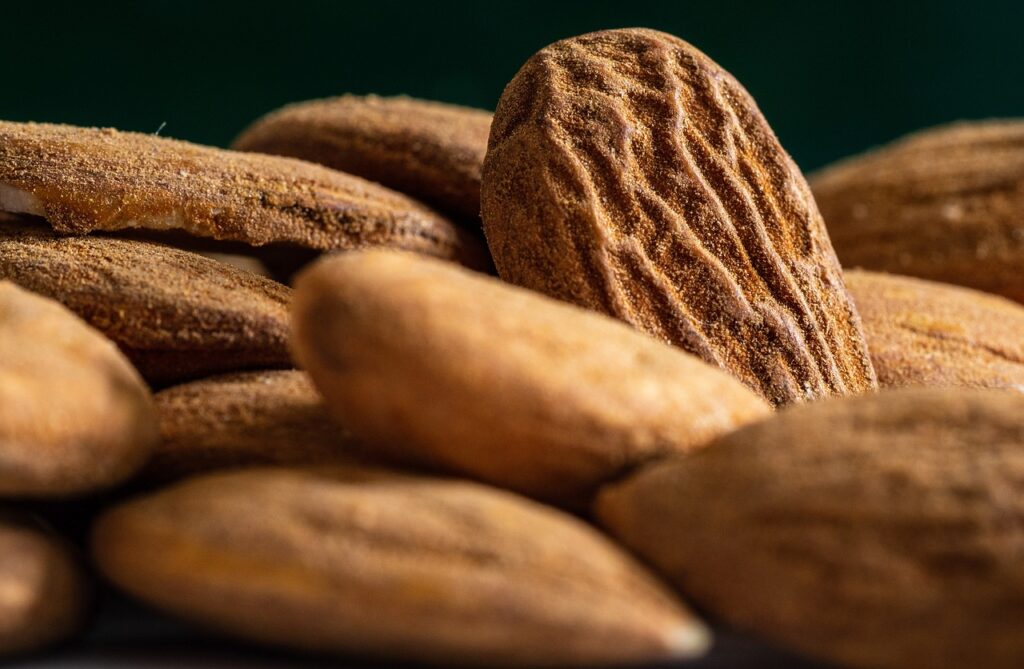
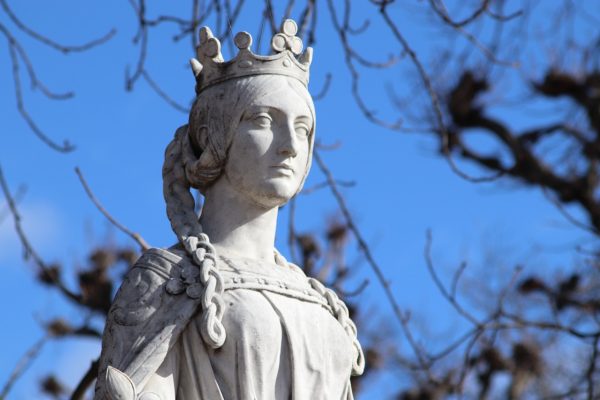
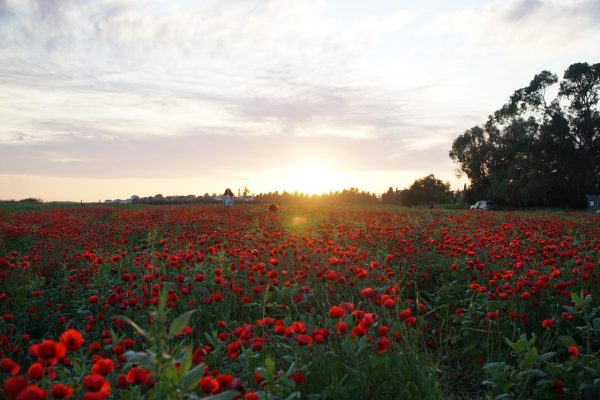
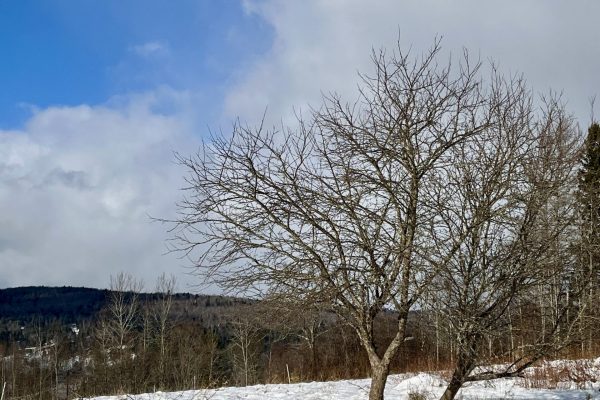







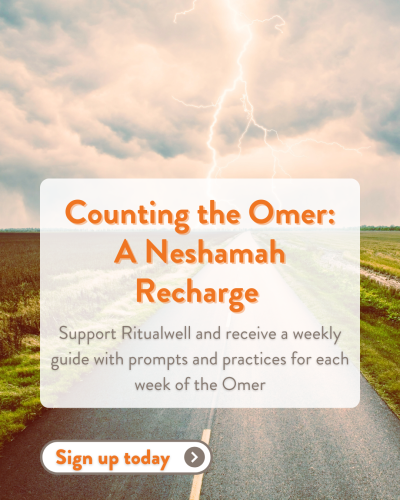

One Response
Thank you very much for this seder haggadah. Put it in organic fruit baskets and book sections at cooperatives like the Mississippi Market Natural Foods Co-op in St. Paul, MN, and you will continue the Maxwell House haggadah tradition and strike a blow for ecology, too.